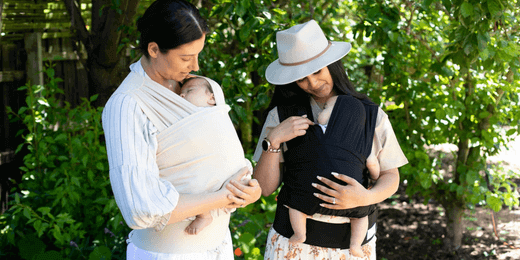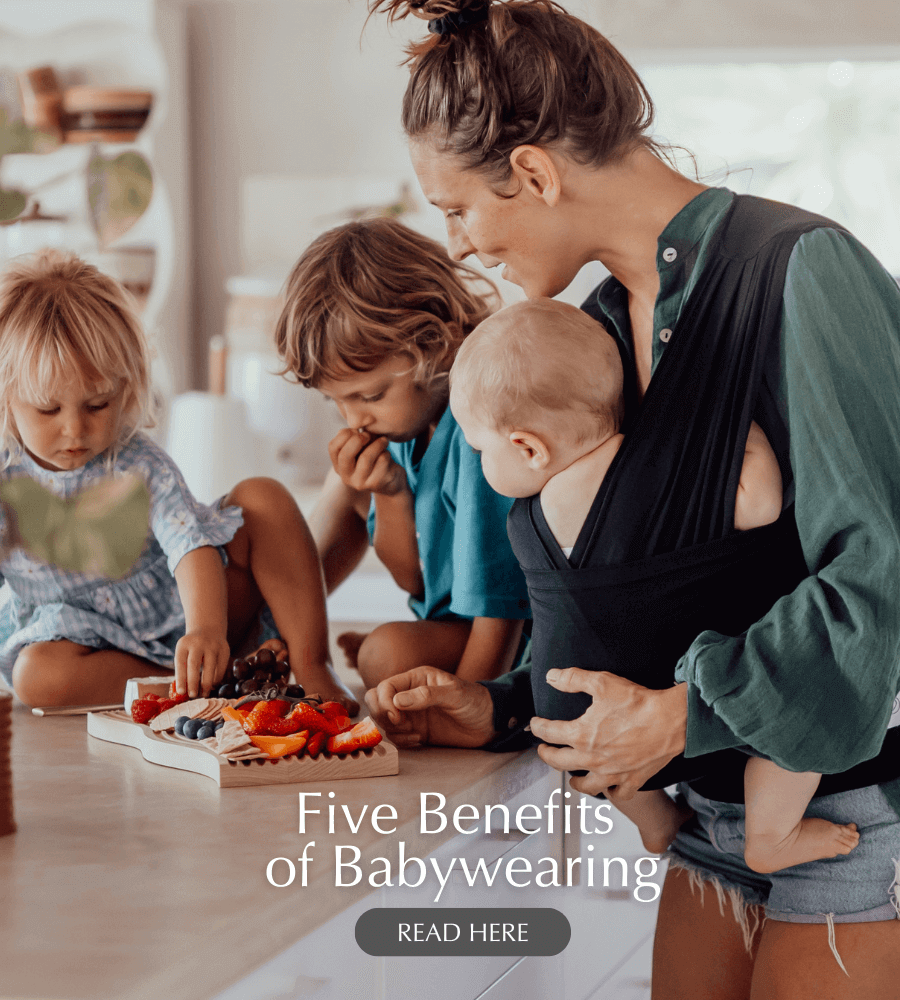5 Babywearing Mistakes Parents Should Avoid | BabyDink
As a mum of two, I know how precious those newborn moments are—the cuddles, the coos, and those sleepy little sighs that make your heart melt. But let’s face it, life doesn’t slow down just because you’re holding a baby in your arms. The laundry still piles up, meals still need to be made, and somehow, your to-do list keeps growing.
That’s where babywearing comes in. It’s like your secret parenting superpower, letting you keep your little one close while having the freedom to tackle your day. What you do need to take note of is, just like any new skill, there’s a bit of a learning curve. You might feel a little unsure at first, or maybe you’ve had a few moments where things didn’t quite go to plan (we’ve all been there!).
That’s why this guide is here—to help you avoid the common babywearing mistakes so many of us make in the beginning. With a little know-how and some practical tips, you can enjoy the benefits of babywearing while making it safe, comfortable, and oh-so-bonding for you and your baby. Ready to dive in? Let’s get started!
To help you get the most out of babywearing, we've rounded up the five most common mistakes parents make—along with simple tips to avoid them.
Mistake #1 – Choosing the Wrong Size
Why it’s a problem: Choosing the right size for your BabyDink carrier is the most important factor to ensure comfort, safety, and support. A carrier that doesn’t fit properly can leave you and your baby feeling uncomfortable.
If your carrier is too loose, it might lack the necessary support for your little one’s body; if it's too tight, it can lead to discomfort for both of you.
What you need to know: The right fit ensures that your baby is properly supported and your back stays pain-free. According to the International Hip Dysplasia Institute (IHDI), it’s especially important to get the right fit for newborns to promote healthy hip development.
For Newborns:
-
Opt for a carrier that offers a snug, close fit like BabyDink 😉 This helps support your baby’s hips and keeps them safe and cosy.
-
Soft wraps are specifically designed for newborns, as it provides the softest transition from womb to world. The close contact will help soothe your little one and strengthen your bond.
For Older Babies:
-
As your baby grows and gains head and neck control, you’ll want to move to a structured carrier that provides support for both their growing body and your back.
Pro Tip: Check the sizing guide for your carrier and consider chatting with a babywearing expert for advice on the best fit. A carrier like BabyDink, designed with a no-wrap structure, takes the guesswork out of sizing and is perfect for parents who want things simple and secure.
For more guidance on finding the perfect fit, check out BabyDink's sizing guide
here.
Mistake #2 – Skipping the Instructions (We’ve All Done It)
Why it’s a problem: Baby carriers often come with their own set of instructions that are essential for ensuring a proper, safe fit. Skipping these instructions can lead to incorrect positioning, which might make babywearing less comfortable, less effective and potentially unsafe.
Think of it like trying to assemble furniture without the manual—you're probably not going to get the result you want!
What you need to know: Taking the time to read the instructions and watch tutorial videos can make a world of difference. They’ll guide you on how to properly position your baby, adjust the straps, and ensure your carrier is secure.
What to do:
-
Read the manual carefully before using your carrier. It may seem like a lot at first, but the instructions are there to ensure safety and comfort.
-
If your carrier includes video tutorials, take a few minutes to watch them. It’s a small investment in your peace of mind.
Pro Tip: Even if your carrier has a simple, no-wrap design like BabyDink, double-check that your baby is positioned correctly. Proper fit and alignment will make babywearing a comfortable experience for both you and your little one.
Mistake #3 – Assuming Babywearing Is Fully Hands-Free
Why it’s a problem: The idea of being "hands-free" is one of the biggest perks of babywearing—but it’s important to remember that while babywearing allows you to do more, you still need to stay mindful. Some activities—especially those that involve quick or sudden movements—are not ideal for babywearing.
What you need to know: While babywearing frees up your hands for most everyday tasks, it’s essential to remain aware of your baby’s position and comfort. Babywearing should not be used for tasks that involve bending quickly, working near hot surfaces, or any activity that could put your baby at risk.
What to do:
-
Stay mindful: Babies can be wiggly, so avoid risky movements (like leaning over quickly or carrying heavy objects) that might affect your baby’s safety.
-
Regular checks: Periodically check your baby’s position, especially when you’re moving or transitioning between activities.
-
Use babywearing for light activities: Walking, light chores, and bonding time are perfect for babywearing, but for anything more intense, take the carrier off to avoid potential mishaps.
Safety Tip: Even with a secure fit, babywearing should be thought of as “hands-assisted” babywearing. You’re free to multitask, but always be prepared to offer your baby extra support when necessary.
Mistake #4 – Not Taking Regular Breaks (Your Back Will Thank You)
Why it’s a problem: Although babywearing is a convenient way to keep your baby close, it can be hard on your body, especially if you wear your baby for extended periods without taking breaks. Prolonged wear can lead to muscle strain, back pain, and discomfort.
What you need to know: Taking regular breaks is important to give your body a chance to rest and to ensure your baby stays comfortable.
The Australian Physiotherapy Association recommends taking frequent breaks to prevent strain, and to allow your baby some time to move around.
What to do:
-
Stretch it out: Every couple of hours, take a break to let your baby stretch or have a little tummy time.
-
Listen to your body: If you’re starting to feel fatigued, take a break! You can always use this time for a quick cuddle session or to change positions.
-
Adjust as needed: If you start to feel sore, consider adjusting the straps or switching to a different carrier for a more comfortable fit.
Pro Tip: BabyDink’s design ensures that you’ll stay comfortable, but taking breaks every so often will make babywearing even better for you and your little one.
Mistake #5 – Ignoring Baby’s Cues (They Really Do Have a Lot to Say)
Why it’s a problem: Your baby might be small, but they’re experts at communicating how they feel—whether it’s through wriggling, crying, or fussing. Ignoring these cues can lead to discomfort for your baby and could impact their experience in the carrier.
What you need to know: Your baby’s movements and sounds are signals telling you what’s going on. Whether they need an adjustment or a break from the carrier, staying tuned into these cues will help keep them comfortable and happy.
What to do:
-
Know the signs: If your baby is arching their back, crying, or looking uncomfortable, it’s time for a quick adjustment.
-
Listen to your baby: Sometimes, all it takes is a quick repositioning or a cuddle break to keep your little one happy.
Pro Tip: Always stay attentive to your baby’s needs. When in doubt, a quick check will help both of you feel more comfortable.
Babywearing Tips from BabyDink
Getting your BabyDink carrier to feel just right is key for comfort and safety. Here are a few tried-and-true tips to make babywearing as smooth and snug as possible:
1. Perfect Your Hip Band Placement
Positioning the velcro hip band slightly lower on your hips—closer to your bottom—can work wonders for comfort. This simple adjustment helps distribute your baby’s weight evenly, reducing strain on your lower back. Plus, it keeps the carrier’s shoulder seams sitting high and aligned with the natural seam of a t-shirt, which is exactly where they should be.
2. Adjust the Crossover Straps for Support
Once you’ve stretched out the crossover straps, ensure they’re evenly extended from knee to knee to provide optimal support for your little one. This helps maintain a healthy ergonomic position for their hips, which is especially important for newborns.
3. Wiggle Bub Down for a Secure Fit
After placing your baby in the carrier, gently wiggle them down so they sit deeply and securely in the carrier. This not only enhances comfort for both of you but also ensures your baby stays in the correct position throughout your wear.
4. Layer Up the Carrier for Safety
Pull the top layer of the carrier up and over your baby’s shoulders, leaving their feet outside the carrier. This step is crucial for providing both support and freedom of movement for your little one’s growing legs.
5. Regular Fit Checks
Before heading out, take a moment to check the carrier’s fit. Make sure your baby is snug, supported, and sitting in an ergonomic position, with their knees slightly higher than their hips in an “M” shape.
These small but essential adjustments can make all the difference in your babywearing experience. BabyDink is designed to make babywearing effortless and comfortable, but these tips will take your wear to the next level!










Leave a comment (all fields required)